|
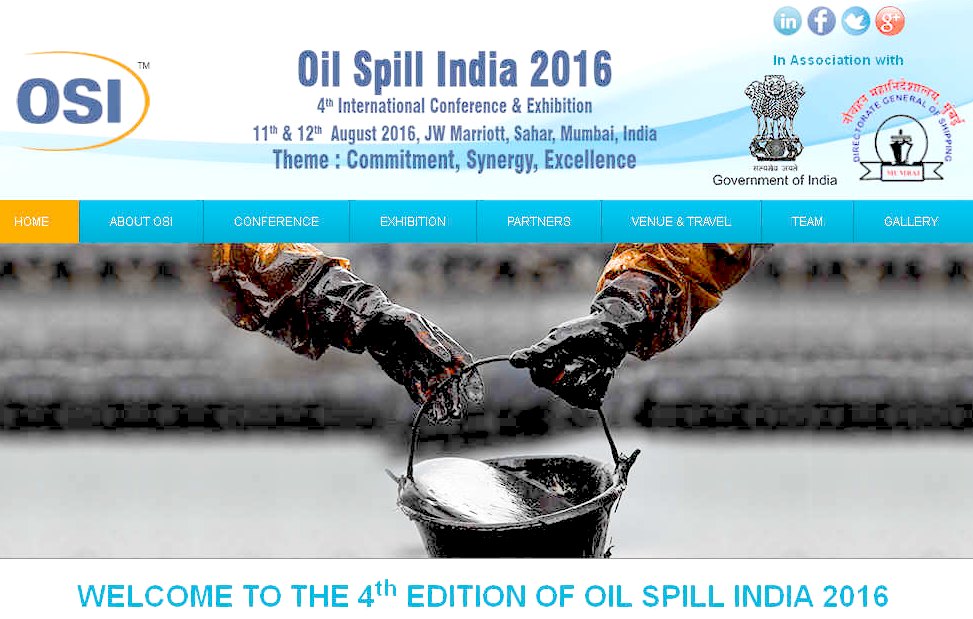
In the wake of the recent Sundarbans Oil
Spill incident, we are yet again reminded of the fragility of similar eco-sensitive areas in the waters following any oil spill & the increasing amount of uncertainty for similar incidents. Fortunately since the last Oil Spill India Conference in September 2014 at Goa, the quantum of work been done & the progress made on actionable points by various stakeholders of the industry led by Indian Coast Guards (ICG) has been noteworthy.
We are riding a new wave of expansive research, innovation and renewed dedication to advancing effectiveness in oil spill response capabilities. Leading the wave of change is the Indian Coast Guard through numerous measures including: the recently released & comprehensively revised National Oil Spill Disaster Contingency Plan 2015 (NOS-DCP), which meets international standards; An Online Oil Spill Advisory system-a system that places India amongst a select list of countries that have indigenously developed capabilities for prediction of trajectory of oil spills; Mapping of environmental sensitivities in coastal zones, deployment of Aerial Dispersant Spray System &finally facilitating the regional oil spill contingency plans under the auspices of the South Asia Cooperative Environment Program of the United Nations including development of national plans for Maldives and Sri Lanka.
One of the central goals of the Oil Spill India (OSI) Conference is to partake at this critical juncture in brining a promising future for the global oil spill industry & its stakeholders. Since its inception in 2011, OSI has continually evolved & OSI 2016 will be no exception in meeting the changing needs and interests of the community that it serves. Themed “Commitment, Synergy, Excellence” OSI 2016 will continue its tradition of providing a forum on stakeholders commitment for Environmental Sustainability, Oil Spill Preparedness & Prevention, the need for Synergy in Oil Spill Response & Excellence in Restoration efforts.
ABOUT
OIL SPILL INDIA 2016
Oil Spill India 2016 aims to tackle the most prevalent issues facing the global oil spill industry. The summit agenda would stimulate learning through panel debates, technical case studies and keynote sessions that ensure that attendee’s leave with the skills and knowledge required in overcoming the challenges & risks faced by operators & stakeholders. The theme for this year’s conference is:
“COMMITMENT, SYNERGY, EXCELLENCE”
Increasing Global concerns on Oil Spill threats & aftereffects have pushed decision makers across the industry to actively implement strategic
contingency plans & explore proven strategies and technologies in tackling the challenges of oil spill, ensuring their organizations achieve the zero incident benchmarks.
OSI 2016 offers a thought-provoking working environment to reach out, meet and network with industry leaders and key decision makers as they explore how technological and operating advances can benefit their organization in oil spill planning, prepardeness, response & restoration.
The concurrent exhibition provides organisations with an excellent opportunity to showcase their products and services to decision makers and influencers from the industry in the region & beyond.
OSI CALL FOR PAPERS
The paper presentations are the backbone of the OSI’s technical program and contribute to the vast canon of
oil pollution knowledge shared between the government, industry, and academia.
As an internationally recognized technical and policy forum, Oil Spill India 2016 is seeking thematically related papers/abstracts for its 4th edition in Mumbai, India, on 11th & 12th August 2016 the Advisory Board has developed a list of focus topics that are considered timely and appealing for presentations in the conference on which authors are requested to submit related papers. Invited authors would present their respective papers during the technical or interactive sessions scheduled during the conference.
Before a paper is invited for presentation at OSI 2016, an author must first submit a comprehensive abstract for consideration. Starting Jan, 1st , 2016, interested authors should visit: http://www.oilspillindia.org and click the “Call for Papers” tab to find instructions for submitting abstracts electronically using OSI’s online abstract submission system. Abstracts must be in English & should not exceed 400 words. They will be evaluated based on relevance, uniqueness/originality, technical content, and clarity.
The closing date for submission of Abstracts is 31st March 2016.
Authors will be notified of acceptance by 30th April 2016, and Full Papers should be received by 30th June 2016.
AGENDA
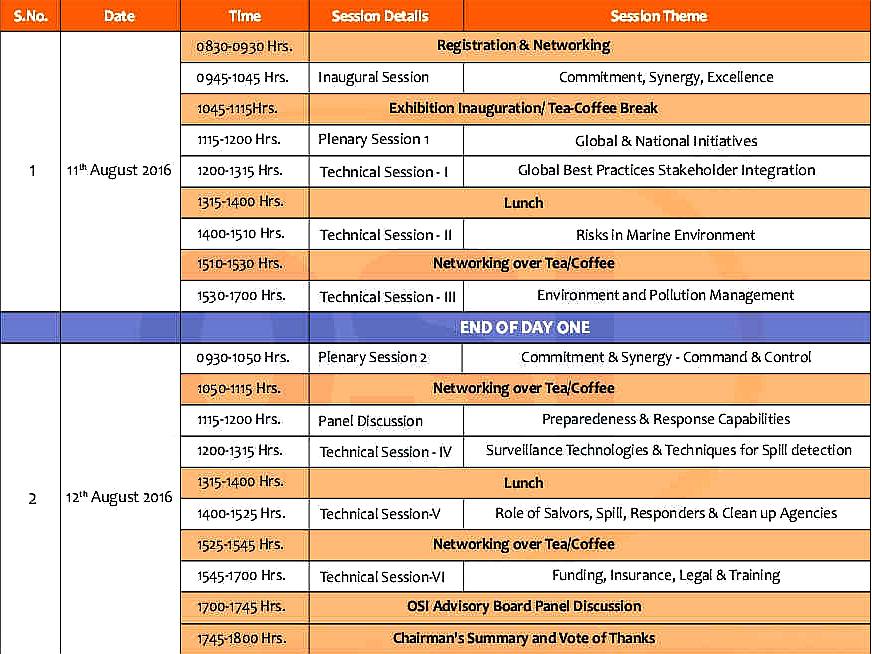

OSI VENUE - J W MARRIOT HOTEL, MUMBAI, JUHU BEACH
The JW Marriott Hotel Mumbai Juhu is the flagship hotel of the Marriott Group in Mumbai,
India. Founded by JW Marriott Jr. and co-owned by Raheja Hospitality The J W Marriott Hotel is located in the Juhu area of Mumbai, overseeing the Juhu Beach.
J
W Marriot, Juhu Tara Road, Mumbai, Maharashtra 400049, India
Phone: +91 22 6693 3000
Web:
J
W Marriott Mumbai Juhu

JW Marriott,
Mumbai was the first JW Marriott brand in
India. It also offers wedding services. The hotel has spas, fine restaurants for dining, halls for
weddings and celebrations, fitness gyms and rooms.
It also houses a nightclub called Enigma that was popular with Bollywood actors and
actresses. JW Marriott Mumbai also houses Quan Spa, the flagship spa brand of Marriott.
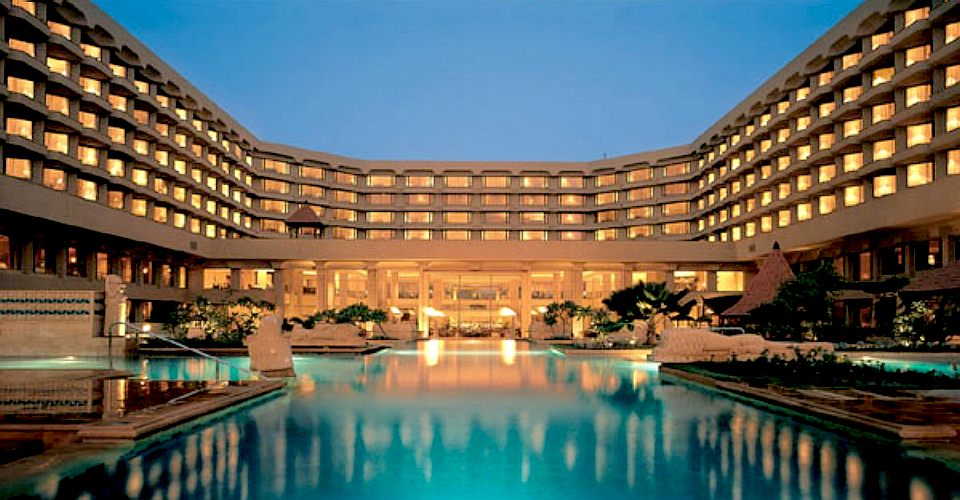
Mumbai is India's financial powerhouse and a pulse point of trade and commerce. It is one of the world's top ten centers of commerce in terms of global financial flow, generating 6.16% of India's GDP and accounting for 25% of industrial output, 70% of maritime trade in India and 70% of capital transactions to India's economy. Mumbai's business opportunities, as well as its potential to offer a higher standard of living, attract migrants from all over the world, making the city a melting pot of many communities and cultures.
CONTACTS
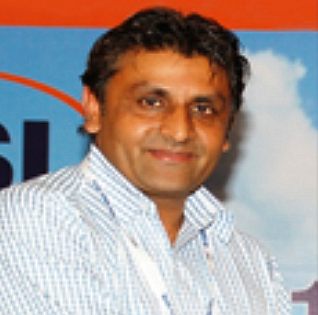
Project Head
- Manoj Kumar
E: manoj@itenmedia.in
M: +91 9871238544

Exhibition Sales - Ravi Kumar
Manager Sales
E: ravi@itenmedia.in
M: +91 9711433860

Speaker Coordination & Marketing - Sunny Mehta
Manager Marketing
E: sunny@itenmedia.in
M: +91-9711433168
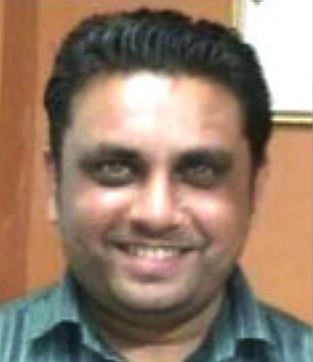
Delegate Sales - Shalinder Chauhan
Manager Sales
E: secretariat@itenmedia.in
M: +91 9711241886

Postal Address
iTEN Media Pvt. Ltd.
4th Floor, Janki House,
Plot No. 33, Sector-12A,
Dwarka, New Delhi 110075, India.
Tel: +91 11 43013474
Fax: +91 11 42171483



THE
INDIAN
OCEAN COMMISSION
The
Indian
Ocean Commission (IOC) is an intergovernmental organization that was
created in 1982 at Port Louis, Mauritius and institutionalized in 1984 by
the Victoria Agreement in Seychelles. The IOC is composed of five African
Indian Ocean nations: Comoros, Réunion (a department of France),
Madagascar, Mauritius and Seychelles. Notwithstanding their different
characteristics (Reunion as a French department; Mauritius and Seychelles
as Middle-Income Countries whereas Comoros and Madagascar are amongst the
Least-Developed Countries), the five islands share geographic proximity,
historical and demographic relationships, natural resources and common
development issues.
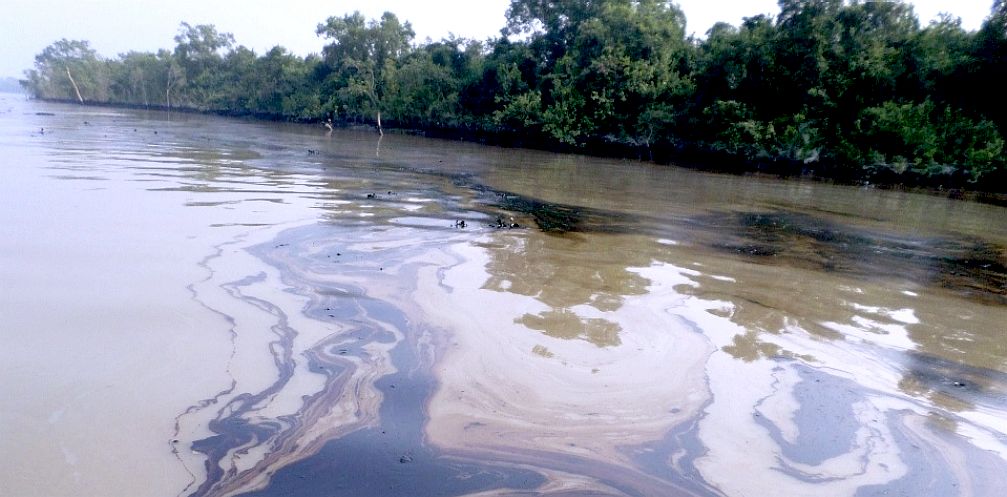
DECEMBER 2014 - SUNDARBANS OIL SPILL
The 2014 Sundarbans oil spill was an oil spill that occurred on 9 December 2014 at the Shela River in Sundarbans,
Bangladesh, a
UNESCO World Heritage site. The spill occurred when an
oil-tanker named Southern Star VII, carrying 350,000 litres (77,000 imp gal; 92,000 US gal) of furnace oil, was in collision with a cargo vessel and sank in the river. By December 17, the oil had spread over a 350 km2 (140 sq mi) area. The oil spread to a second river and a network of canals in Sundarbans, which blackened the shoreline. The spill threatened trees, plankton, and vast populations of small
fish and
dolphins. The spill occurred at a protected mangrove area, home to rare Irrawaddy and Ganges dolphins. By 12 January 2015, 70,000 litres (15,000 imp gal; 18,000 US gal) of
oil had been cleaned up by local residents, the Bangladesh Navy, and the government of Bangladesh.
Environmentalists warned that the event was an ecological "catastrophe", as the spill occurred at a protected area where rare dolphins were present. Experts expressed concerns that the oil spill will hamper the well-being of the aquatic organisms in the area. Wildlife near the river are at a risk of death, because the smell of oil makes breathing difficult. Some images indicate that the disaster killed some animals.
On 13 December 2014, a dead Irrawaddy dolphin was seen floating on the Harintana-Tembulbunia channel of the Shela
River. However, it was not confirmed that the dolphin's death was caused by the oil spill. According to the local residents, few dolphins have been seen in the area since the oil spill. Oriental small-clawed otter (Amblonyx cinereus) aquatic carnivore animal lives in the aquatic ecosystem of Sundarbans. On 18 December 2014, two dead otters were recovered from the Shela River by forest department workers. An autopsy of the two otters confirmed that they had died from ingesting oil. The otter is considered to be an endangered species, and has been included in the International Union for Conservation of Nature endangered list.
A team of forest department workers saw crocodiles, monitor lizards and many other animals smeared with oil at the Chandpai range of the Sundarbans.
The oil spill is also posing a major threat to the forest's food cycle. Reports from various sources showed that the microorganisms, the primary level of the food cycle, are dying. The United Nations expressed deep concern over the oil spill, urging the government of Bangladesh to impose a "complete ban" on commercial vessels moving through the
forest.
Shajahan Khan, the shipping minister of Bangladesh, told Bangladesh Sangbad Sangstha that he has talked with environmental experts, and they said that there will likely be no major damage as a result of the oil spill. Researchers said that Khan's claim was "unscientific and misleading".
Ten species that are at risk as a result of the spill have been listed by The
National Geographic Traveler. These species are the Irrawady dolphins, Bengal tigers, leopards, great egrets, rhesus macaques, northern river terrapins, black-capped kingfishers, chitals, saltwater crocodiles, and horseshoe crabs. The presence of White Rumped Vulture (Gyps bengalensis) over the Sundarbans sky also indicated the large scale death of wild fauna. The secondary effect of oil spill is always much greater than the primary effects.
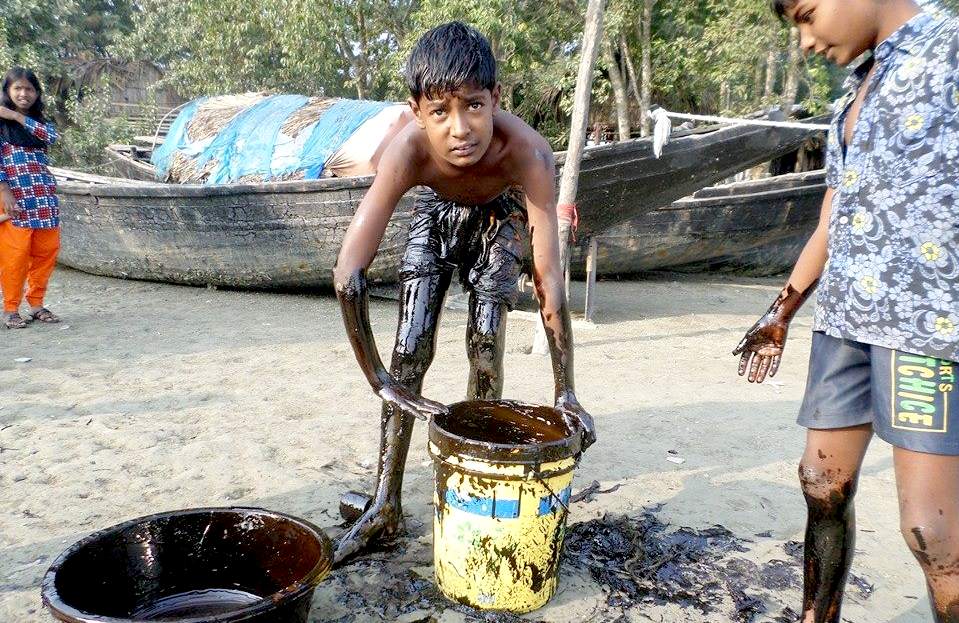
RECOVERY
After the spill, primarily Bangladeshi fishermen began to clean up the oil using sponges and sacks. Padma Oil Company, a government-owned corporation, bought the oil at a price of 30 takas per litre. The Bangladeshi navy initially sent four ships to deal with the spill, and planned to use chemicals to disperse the oil, but the plan was canceled, as there were concerns that dispersing the oil would further damage the ecology and biodiversity of the mangrove forest. The government of Bangladesh closed the Shela River to all vessels. The owner of the sunken oil tanker, MS Harun & Co., began salvage efforts, assisted by three private rescue vessels. The Bangladesh Forest Department filed a 1 billion taka lawsuit against the owners of the two cargo ships involved in the collision. By 12 January 2015, the government, with the help of local residents, the Bangladesh Navy, and the owner of the oil tanker, had collected 70,000 litres (15,000 imp gal; 18,000 US gal) of oil. The Bangladesh government said that they do not have the capacity to manage oil spills.
The Economic Relations Division of the Bangladesh government sent a letter to the United Nation's Bangladesh office on 15 December 2014, asking for help in the oil collection efforts. The United Nations accepted the request, and a team from the UNEP and OCHA went to the site of the spill. A team from the
United Nations Disaster Assessment and Coordination arrived in the Dhaka to support the cleanup efforts.
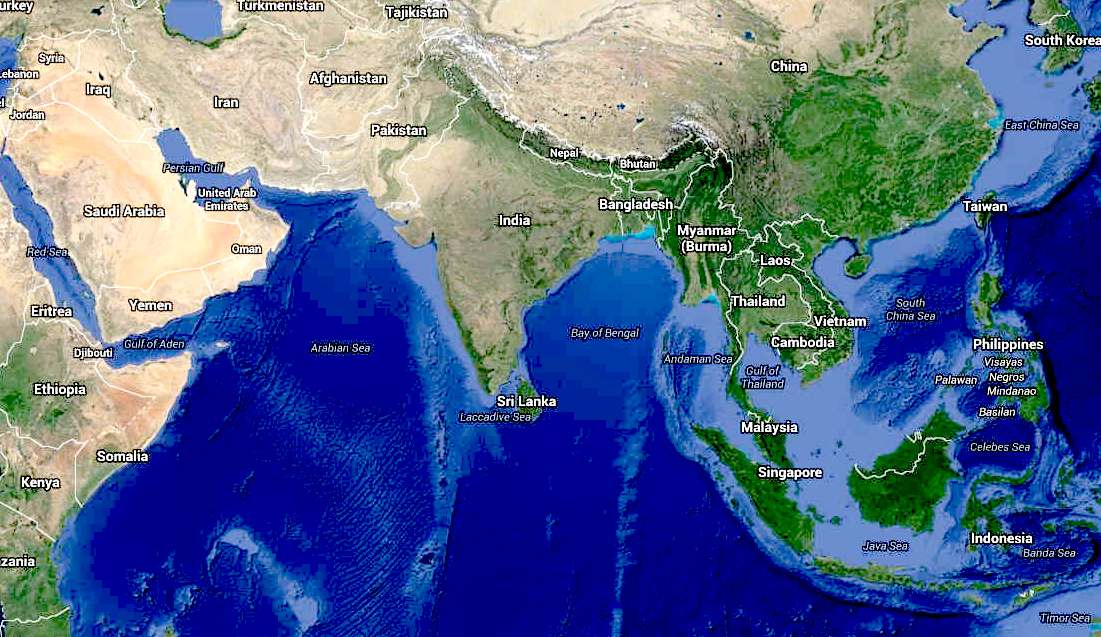
The Indian Ocean is the third largest of the world's oceanic divisions, covering approximately 20% of the water on the
Earth's surface. It is bounded by Asia
- including India, after which the ocean is named - on the north, on the west by
Africa, on the east by
Australia, and on the south by the Southern Ocean,
or, depending on definition, by Antarctica.
Oil
and plastic
pollution totaling some eight million tons of waste in five major ocean
gyres, is killing life in the oceans and poisoning our food chain. Dolphins,
Seals and Turtles that have been trapped by plastic bags, nets and the
like are common sights. These animals cannot clean the oceans up
themselves. They need the help of the humans that caused the problem,
turning their
habitat into a convenient 'out of sight' rubbish dump.
ACIDIFICATION
- ADRIATIC
- ARCTIC
- ATLANTIC - BALTIC
- BAY BENGAL - BERING
- CARIBBEAN - CORAL - EAST
CHINA
ENGLISH CH
-
GOC - GUANABARA
- GULF
GUINEA - GULF
MEXICO
- INDIAN
-
IOC
-
IRC - MEDITERRANEAN -
NORTH SEA - PACIFIC
- PERSIAN GULF - SEA
JAPAN -
STH
CHINA - PLASTIC
- PLANKTON - PLASTIC
OCEANS - SEA
LEVEL RISE - UNCLOS
- UNEP
WOC
- WWF
AMAZON
- BURIGANGA - CITARUM - CONGO - CUYAHOGA
-
GANGES - IRTYSH
- JORDAN - LENA -
MANTANZA-RIACHUELO
MARILAO
- MEKONG - MISSISSIPPI - NIGER - NILE - PARANA - PASIG - SARNO - THAMES
- YANGTZE - YAMUNA - YELLOW
LINKS
& REFERENCE
https://en.wikipedia.org/wiki/2014_Sundarbans_oil_spill
https://twitter.com/oilspillindia
http://www.marriott.co.uk/hotels/travel/bomjw-jw-marriott-mumbai-juhu/
https://en.wikipedia.org/wiki/JW_Marriott_Mumbai
https://www.facebook.com/pages/Oil-Spill-India/213302935370793
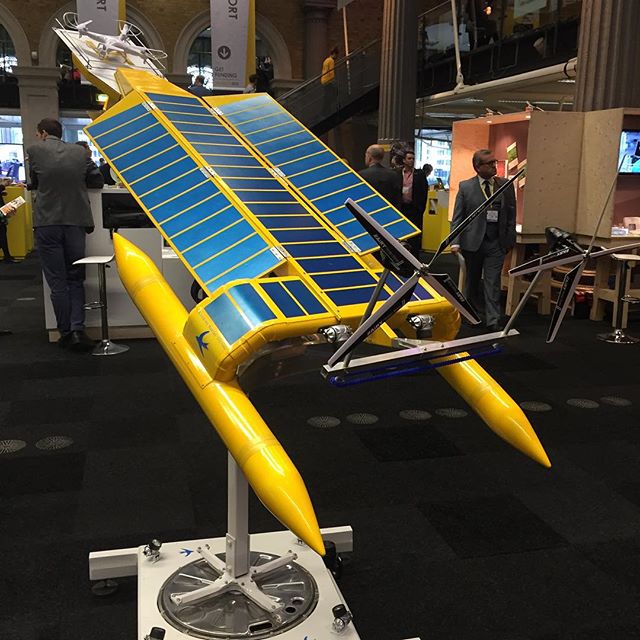
SEAVOLUTION - The
key to accurate hydrographic mapping is continuous monitoring,
for which the SeaVax platform, presently under development, is a robotic ocean workhorse. Based on a stable
trimaran configuration this design is under development in the UK for international deployment. A robot
ship uses no diesel fuel to monitor
rivers
and oceans autonomously (COLREGS
compliant) 24/7 and 365 days a year - only possible with the revolutionary (patent) energy harvesting system.
|














